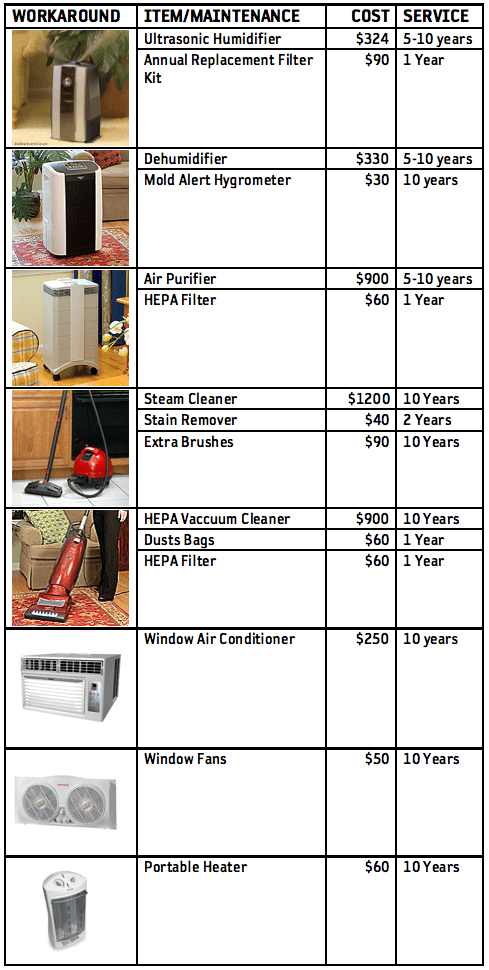My son is driving the VW Cabrio convertible I bought in 1999. I still remember being stunned by the fact that you couldn’t put a coffee cup in the cup holder and get it back out without hitting the dashboard. Didn’t they ever even try it? Since their system didn’t work they left it to me to figure out how to drive holding a cup of coffee.
It turns out that our houses ask us to come up with a host of similar workarounds for their shortcomings. Short on what we imagine were basic expectations for comfort and health, we’re left to acquire devices that might overcome these deficits. Fortunately (?) there are whole industries eager to help.
I got a catalogue the other day for products that are essentially solutions for the way our homes don’t work. Out of the box as it were. I started thinking about the insidious way in which we accumulate these devices and their costs accrue. They don’t last all that long, and they require all these replacement parts and filters, not to mention the energy required to use them, not a small thing for devices that often run 24/7 or use electricity to generate heat, the most demanding of household electrical applications.
Here’s a table of some of these devices, their cost and upkeep, and an estimate of their service life.

Here’s the thing that gets me about all this. We can design and build houses that make all this unneccesary. These workarounds cost thousands of dollars to buy, and hundreds to maintain and operate annually. Why is this?
First, until fairly recently, driven in part by the sudden awareness that climate change and the rapid depletion of cheap energy might make our current approach to building obsolete, we weren’t sufficiently aware that we could build remarkably better buildings. Now we know.
Second, (and here is the really hard part) we are inclined to tolerate conditions that are less than ideal. When we end up sick, or too cold or warm, or find our homes too dry or maybe growing mold, we employ these readily available workarounds. And when we are offered the opportunity to take actions to eliminate the conditions that create these maladies, whether in our existing homes or when contemplating constructing new, we become daunted by the necessity to make up front investments in perpetual relief from these intolerable states.
When we talk about Future Friendly Homes, this is what we are talking about. Being rid of these ridiculous workarounds. Cancel that catalogue. Live a better, more comfortable, and healthier life in a home that is designed to sustain it, right out of the box!
